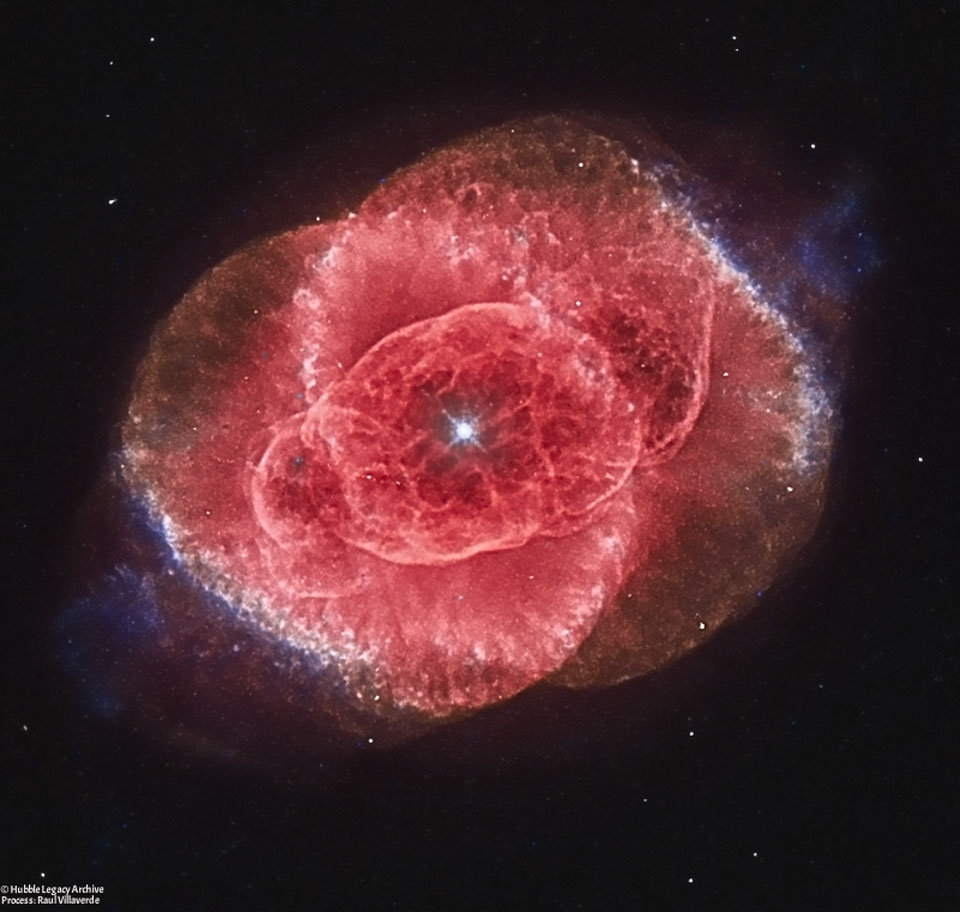2022年7月10日
In the Center of the Cat’s Eye Nebula
Credit: NASA, ESA, Hubble, HLA; Reprocessing & Copyright: Raul Villaverde
Explanation: Three thousand light-years away, a dying star throws off shells of glowing gas. This image from the Hubble Space Telescope reveals the Cat’s Eye Nebula (NGC 6543), to be one of the most complex planetary nebulae known. Spanning half a light-year, the features seen in the Cat’s Eye are so complex that astronomers suspect the bright central object may actually be a binary star system. The term planetary nebula, used to describe this general class of objects, is misleading. Although these objects may appear round and planet-like in small telescopes, high resolution images with large telescopes reveal them to be stars surrounded by cocoons of gas blown off in the late stages of stellar evolution. Gazing into this Cat’s Eye, astronomers may well be seeing more than detailed structure, they may be seeing the fate of our Sun, destined to enter its own planetary nebula phase of evolution … in about 5 billion years.
Tomorrow’s picture: sahara andromeda
猫眼星云的中心
影像提供: NASA, ESA, Hubble, HLA; 影像重处理与版权: Raul Villaverde
说明: 3千光年外的一颗垂死恒星,抛出壳层状的明亮云气。这张来自哈勃太空望远镜的影像,显示猫眼星云(NGC 6543)是现知结构最复杂的行星状星云之一。事实上,宽约半光年的猫眼星云内之亮纹是如此的繁复,让天文学家不禁怀疑其中心的明亮天体其实是个双星系统。用行星状星云来称呼这类 天体其实是种误导,因为虽然它们在小望远镜里,外观浑圆形似行星,但大望远镜所拍摄的高解析影像却清楚指出,它们是外面包着恒星演化末期所抛出的云气茧之恒星。在凝视猫眼星云的同时,天文学家除了看到更细微的结构之外,也等同于看见了我们太阳的宿命,因为再过50亿年,太阳也会演化到行星状星云的阶段。
明日的图片: sahara andromeda







